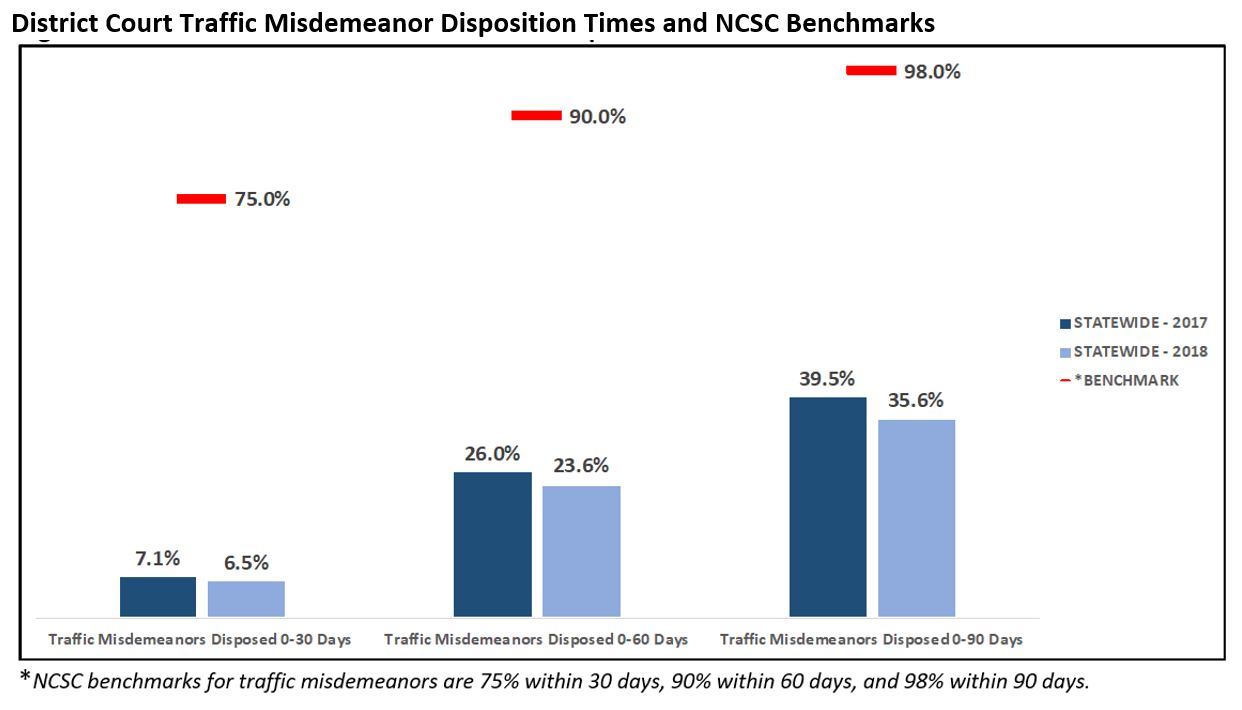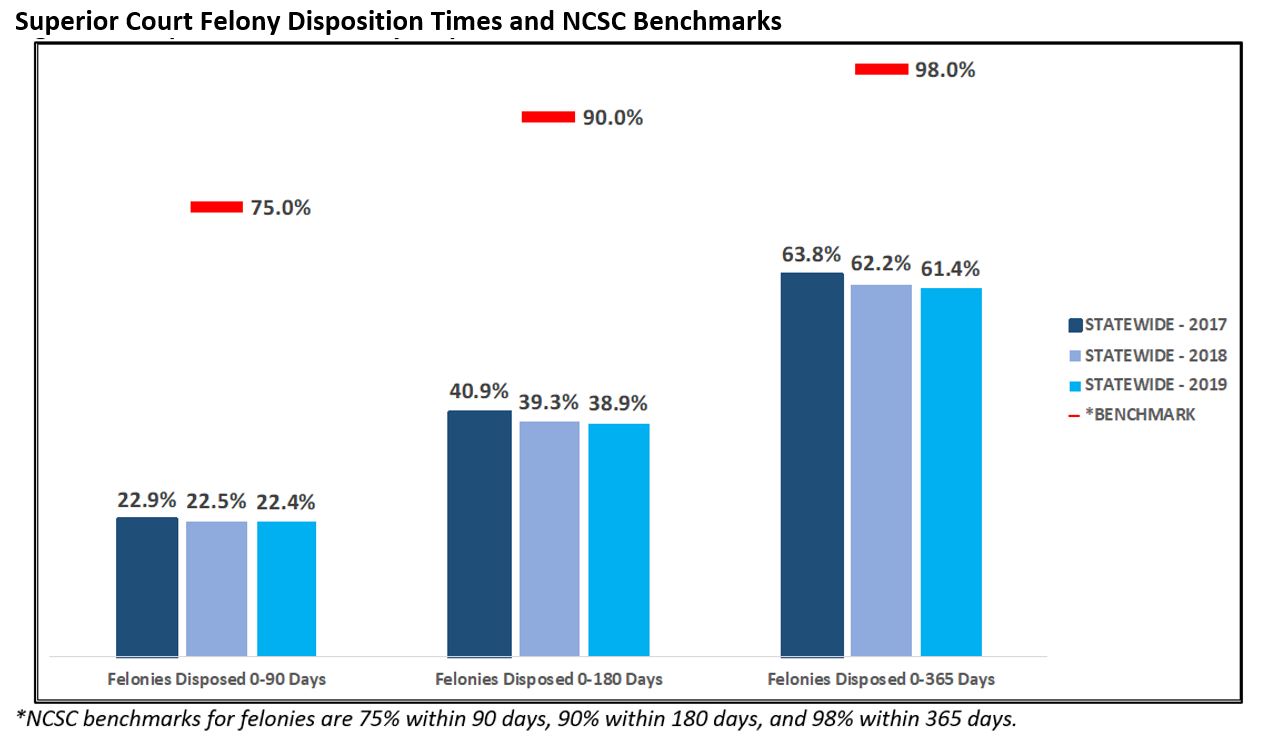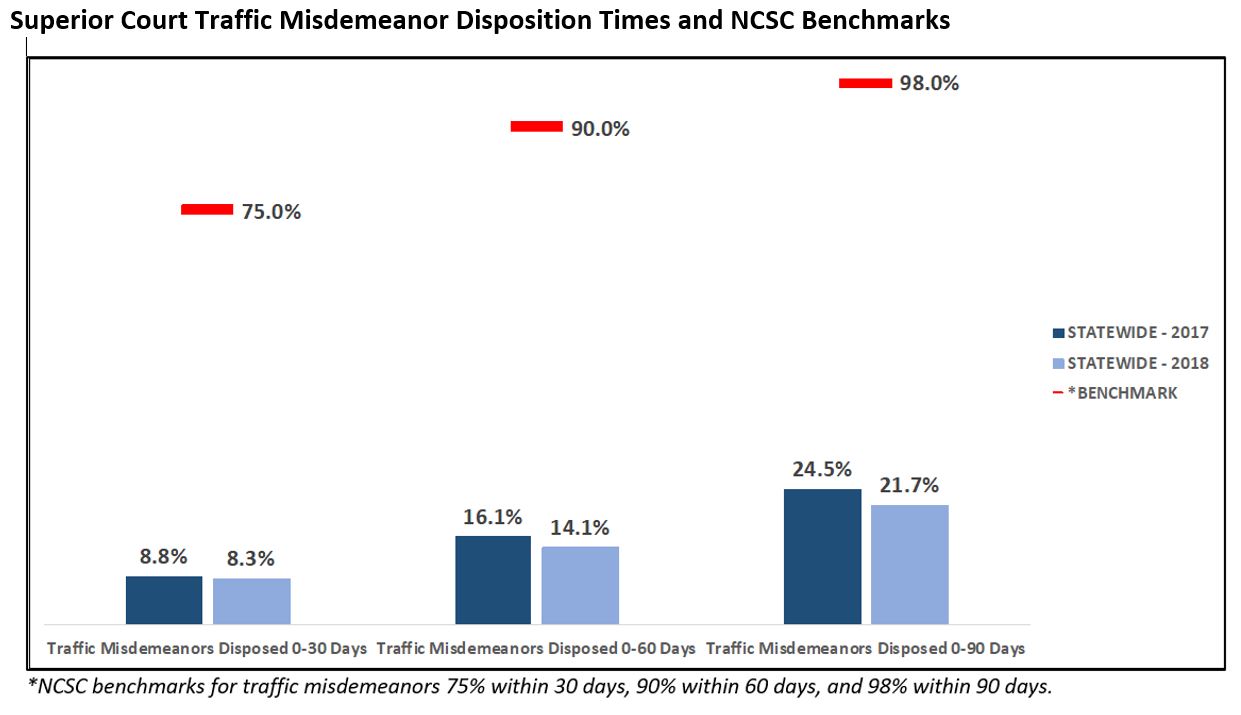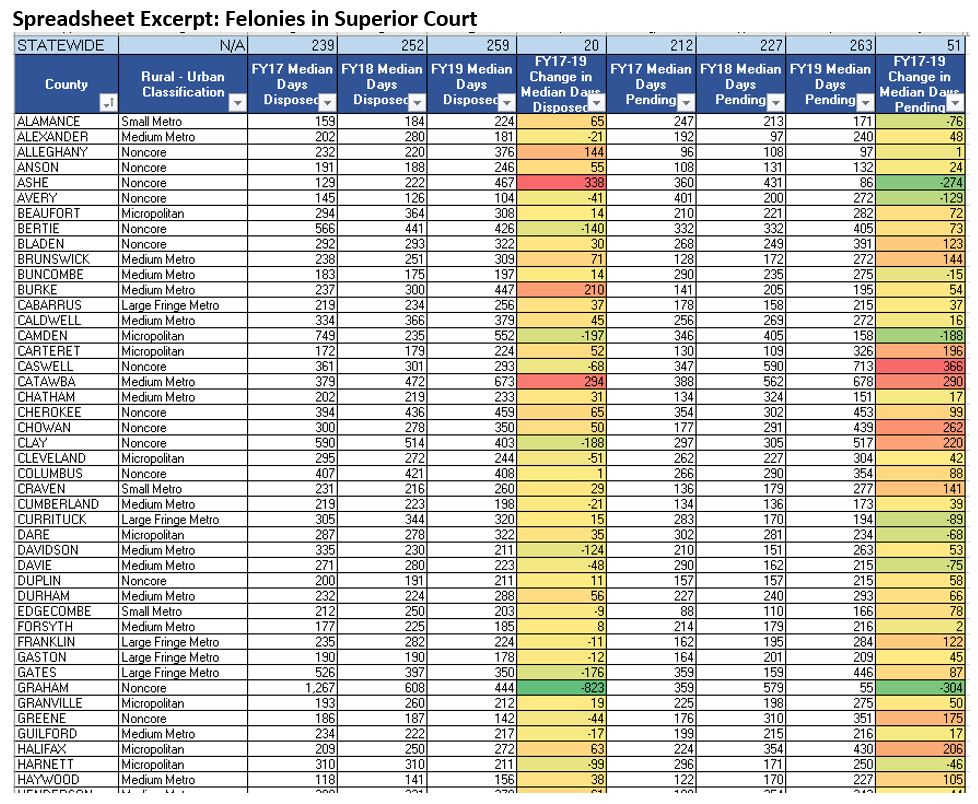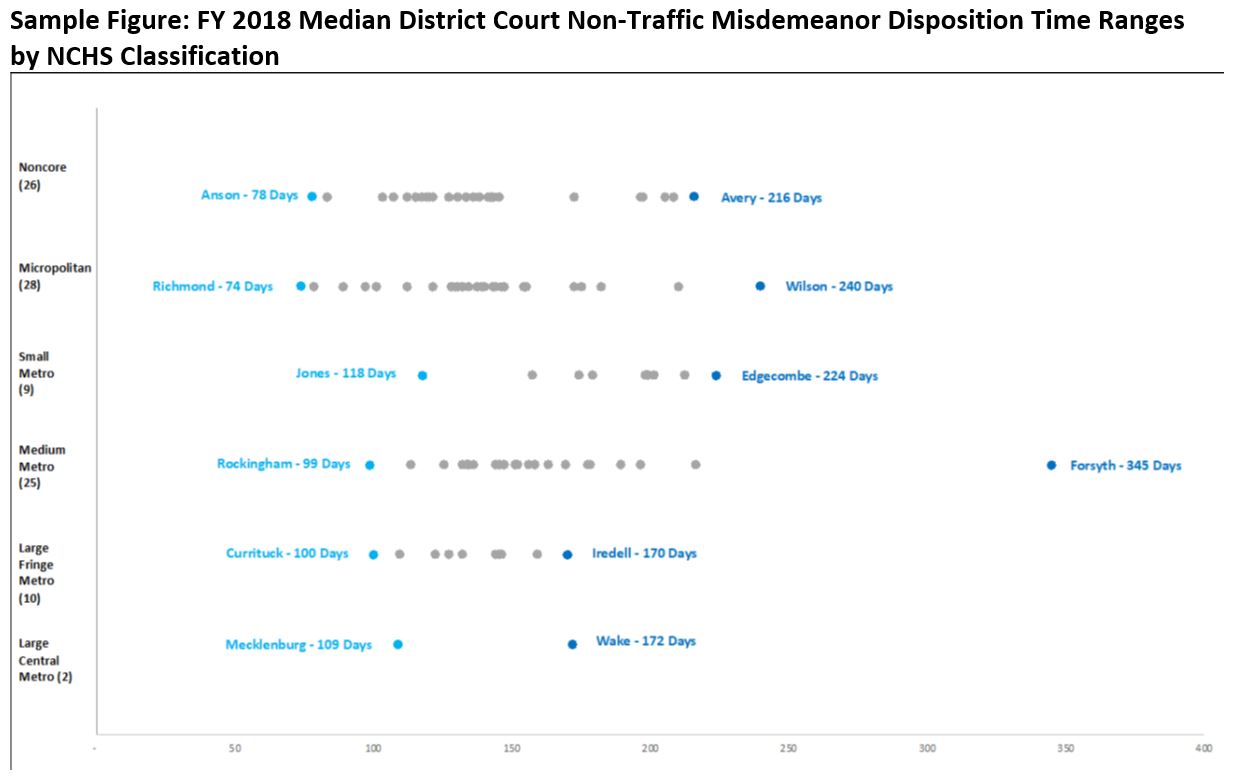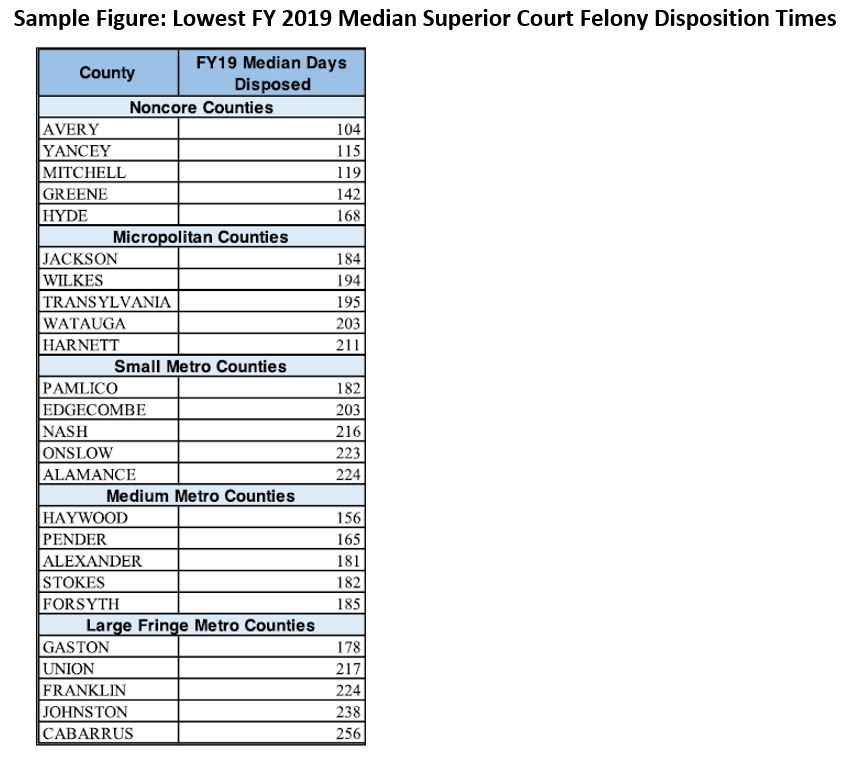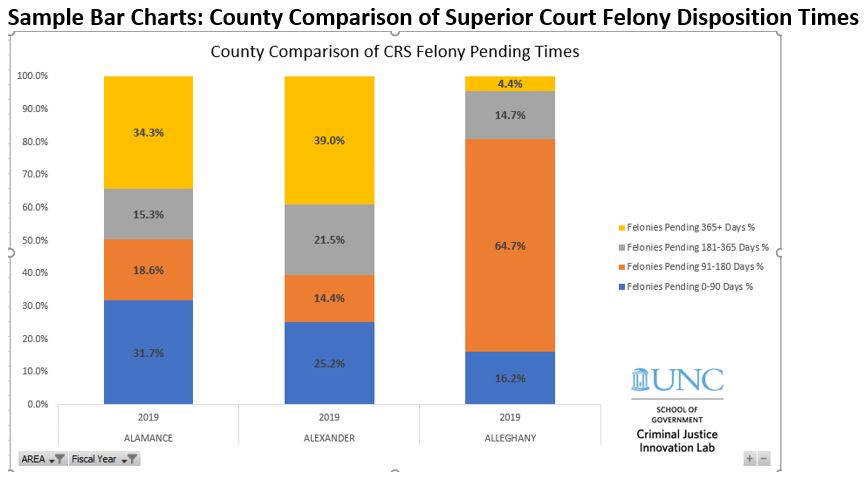How Long Does it Take to Process a Criminal Case in North Carolina?
The Criminal Justice Innovation Lab recently released a report analyzing disposition and pending case times for North Carolina criminal cases. The full report is here. In this blog post, I discuss our findings regarding statewide disposition times as compared to Benchmarks developed by the National Center for State Courts (NCSC). As we explain in the report, the North Carolina Commission on the Administration of Law & Justice recommended that North Carolina examine its current case processing time guidelines using the NCSC Benchmarks as a guide. We thus compared North Carolina disposition times against those metrics. As discussed below, statewide median disposition times in district and superior court, for all case types, fell short of the NCSC Benchmarks.
District Court
Non-Traffic Misdemeanors
In 2018, the statewide median disposition time for non-traffic misdemeanors in district court was 172 days. The figure immediately below compares statewide median disposition times to the NCSC Benchmarks.
Traffic Misdemeanors
In 2018, the statewide median disposition time for traffic misdemeanors in district court was 150 days. The figure immediately below compares statewide median disposition times to the NCSC Benchmarks, again showing numbers that fall short of those benchmarks.
Superior Court
Felonies
In 2019, the median statewide disposition time for superior court felonies was 259 days. As shown in the figure immediately below, statewide disposition times fall short of the NCSC Benchmarks.
Misdemeanors
In 2018, the statewide median disposition time for non-traffic misdemeanors in superior court was 209 days; for traffic misdemeanors it was 207 days. Both metrics fall short of the NCSC Benchmarks.
More Data
Our full report contains significantly more information. In addition to providing information about median pending case times, our report links to spreadsheets showing median disposition and pending case times at the county level in district and superior court for traffic misdemeanors, non-traffic misdemeanors, and felonies, across a range of years. The figure immediately below shows an excerpt from the superior court spreadsheet for felonies.
Tools for Improvement
Because we are focused on helping stakeholders promote a fair and effective criminal justice system, our report contains several tools to help jurisdictions understand and improve disposition times. First, to help jurisdictions understand how disposition and pending case times are changing in their county, our spreadsheets present information over a range of years, and show changes in median disposition and pending case times. In the figure above, the colored columns show those changes, from 2017 to 2019. Second, to help jurisdictions understand how they are performing vis-à-vis their peer counties, we categorized each of North Carolina’s 100 counties using a federal classification scheme for rural-urban jurisdictions. We did so because we understand that factors such as frequency of court sessions, case volume and number of court personnel, can impact case processing times. Our report presents figures showing the range of disposition and pending case times within these various classifications. The figure immediately below is one example, showing median district court non-traffic misdemeanor disposition time ranges by rural-urban classification.
Third, to help stakeholders identify peer counties that they can learn from, for each case category we present a list of counties with the lowest disposition and pending case times. The figure below is an example, showing the counties with the lowest median superior court felony disposition times. Stakeholders wishing to improve case processing times may wish to reach out to their counterparts in these jurisdictions for ideas on how to address case delay.
Finally, because we know that stakeholders will have their own ideas regarding which counties constitute their peer counties, our spreadsheet contains a tool that allows stakeholders to compare their county’s performance to any county or counties of their choosing. The figure below, for example, compares superior court felony disposition times across three counties: Alamance, Alexander, and Alleghany. Again, however, the spreadsheet tool allows you to compare any counties of your choosing, for district and superior court, across all case types.
Future Reports
The NC AOC recently released FY 2019-2020 case processing data. We already are working to update our report with that new data. We welcome your feedback on how we can make this information more accessible and useful to stakeholders.
The post How Long Does it Take to Process a Criminal Case in North Carolina? appeared first on North Carolina Criminal Law.




